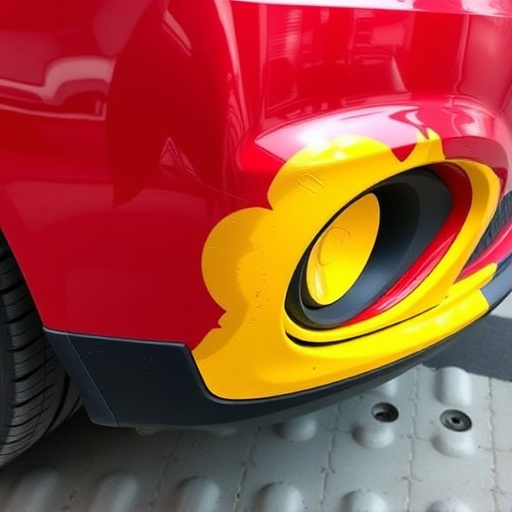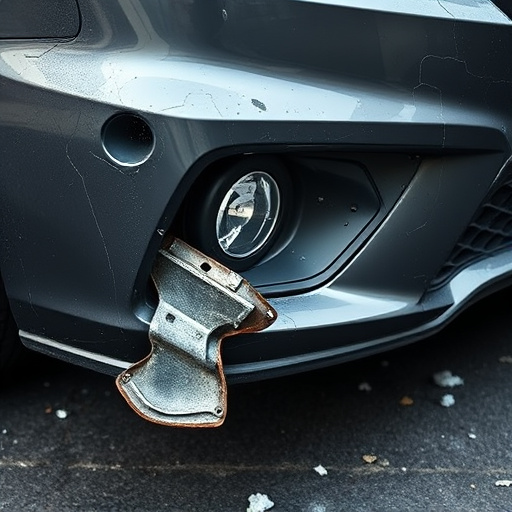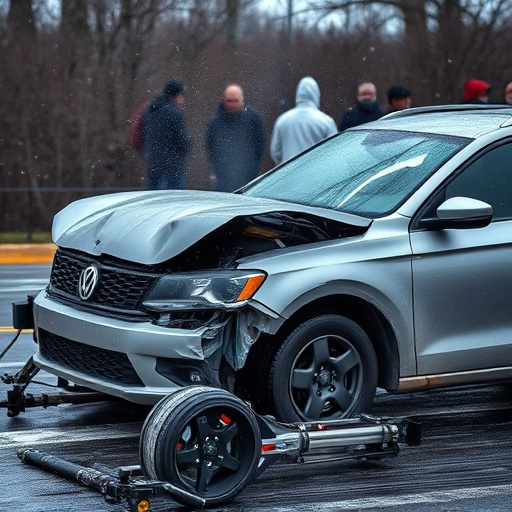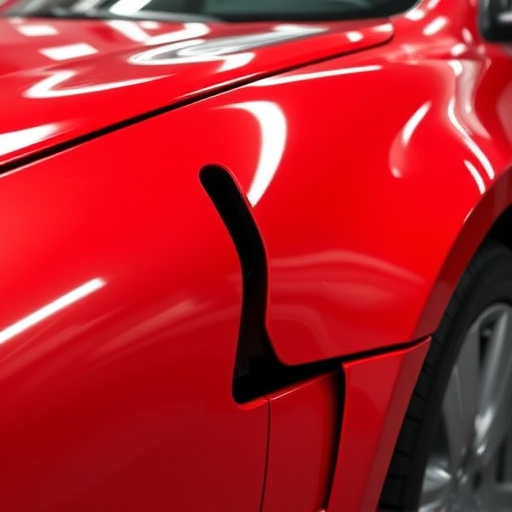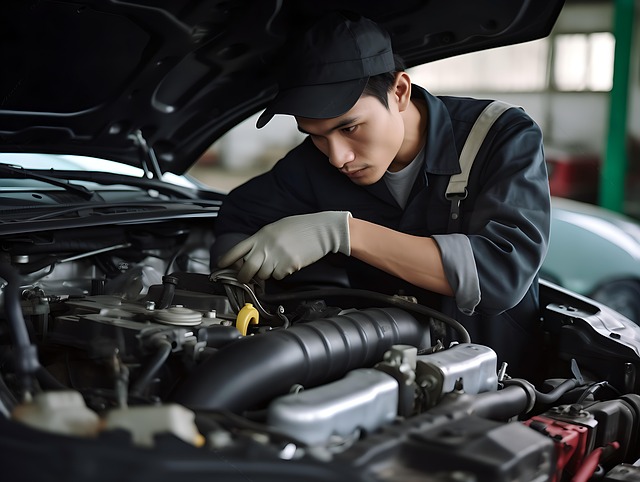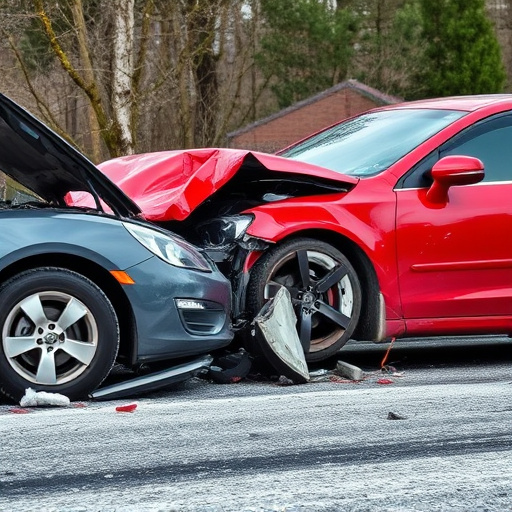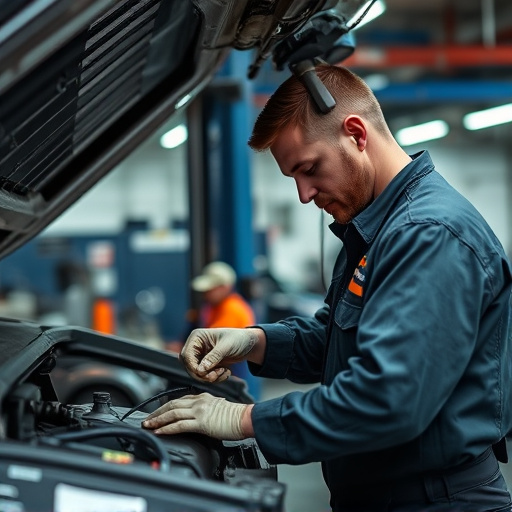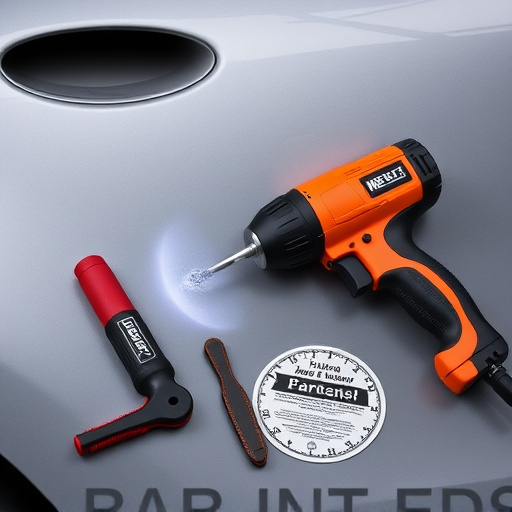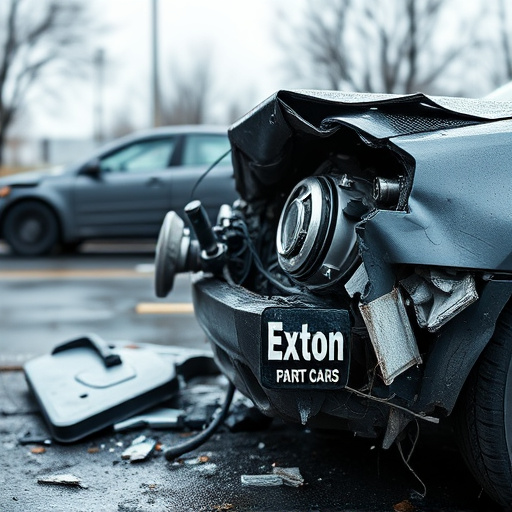After a crash, battery warning lights signal electrical system issues requiring immediate attention. Ignoring these can lead to severe failures compromising performance and safety. Timely battery replacement by professionals is crucial for reliable post-crash vehicle repair and safety. Always prioritize expert handling due to potential hazards associated with complex modern electrical systems.
In the aftermath of a vehicle crash, understanding your car’s battery warning lights is crucial for safety. This guide elucidates the function of these lights and provides insights into when it’s time for a battery replacement after crash. We’ll walk you through the process, offering practical tips on post-crash battery management to ensure your peace of mind. From identifying faulty batteries to implementing safety measures, this article is your comprehensive resource.
- Understanding Battery Warning Lights After Crashes
- When to Replace Batteries Following an Accident
- Safety Tips for Post-Crash Battery Management
Understanding Battery Warning Lights After Crashes

After a crash, your vehicle’s battery warning lights can provide crucial insights into potential issues. These lights are designed to alert drivers and collision repair centers about any abnormalities in the electrical system, often indicating the need for a battery replacement after a crash. Understanding these signals is essential for both safety and effective classic car restoration or hail damage repair processes.
When a collision occurs, the impact can cause internal damage to the battery, affecting its ability to deliver power efficiently. The warning lights may flash or stay on, signaling problems like low voltage, overcharging, or even short circuits. Recognizing these indicators is vital, as ignoring them could lead to more severe electrical failures, compromising your vehicle’s performance and safety features. A trip to a reliable collision repair center can help diagnose and address these issues, ensuring that any necessary battery replacements are performed correctly during the hail damage repair or classic car restoration process.
When to Replace Batteries Following an Accident

After a crash, it’s crucial to assess your vehicle’s damage thoroughly. If your battery warning light illuminates, it could indicate a more severe issue than just bent fenders or shattered auto glass repair. While some minor dents or scratches might be easily fixed through car dent repair, a malfunctioning battery often requires immediate attention and eventual replacement.
Timely battery replacement after a crash is essential for maintaining the safety and performance of your vehicle. Even if other aspects of your car, such as the body panels or headlights, only suffer from cosmetic damage during an accident, a compromised battery can lead to more significant problems down the road, affecting everything from the ignition system to the electrical components crucial for modern automotive restoration. Therefore, it’s wise to prioritize getting your battery checked and replaced if necessary following any collision, ensuring your vehicle remains reliable and safe on the road.
Safety Tips for Post-Crash Battery Management

After a crash, managing your vehicle’s battery is crucial for both safety and effective collision repair services. Before attempting any work on the battery or vehicle bodywork, ensure that the area is well-ventilated and wear protective gear, including gloves and safety glasses. If the battery shows signs of damage, leakage, or swelling, do not attempt to replace it yourself; contact a professional immediately. Remember that working with batteries can be hazardous due to the risk of acid exposure, electrical shocks, or toxic fumes.
For those considering a DIY approach to battery replacement after a crash, keep in mind that modern vehicles have complex electrical systems. Incorrectly replacing or handling a damaged battery could lead to further vehicle damage or pose safety risks. If you’re unsure about the process, consult with collision repair specialists who can perform paintless dent repair while ensuring the battery is safely and correctly replaced. This not only guarantees your vehicle’s long-term reliability but also helps maintain its overall value.
In light of the above discussions, it’s clear that understanding and responding properly to battery warning lights after a crash is crucial for safety. When in doubt, seeking professional advice for battery replacement after accidents is essential. Following these safety tips can help ensure your peace of mind and vehicle’s longevity following a collision. Remember that prompt action regarding battery management post-crash can make all the difference.

